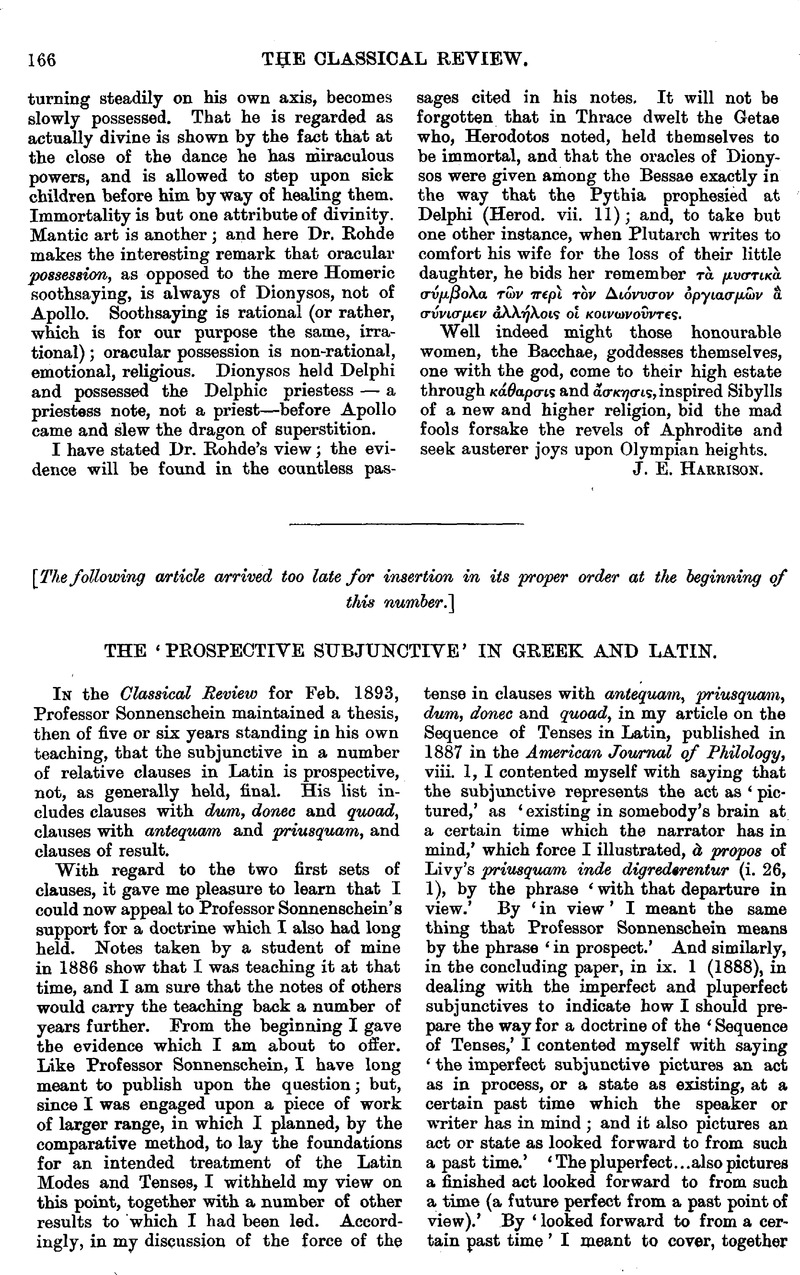No CrossRef data available.
Article contents
The ‘Prospective Subjunctive’ in Greek and Latin
Published online by Cambridge University Press: 27 October 2009
Abstract

- Type
- Other
- Information
- Copyright
- Copyright © The Classical Association 1894
References
page 167 note 1 It must have been a similar and still greater reserve that made Professor Sonnenschein, in his note on Plaut. Rud. 456 in his edition of 1891, go so far even as to seem to accept the traditional starting point of the constructions in question, in the words ‘so regularly with antequam, priusquam, donee, quoad, dum, when an action is to be marked as merely contemplated or in prospect (the original sense of will or purpose having been completely lost).’ For myself, I do not believe that the subjunctive after dum ever expressed will or purpose.
page 168 note 1 Ἔως and εἰς ὄ always take κε in Homer, and, according to Dindorf's Lexicon, always take ἄν in Aeschylus, as they do in Attic prose. The occasional omission cf ἄν in Sophocles is accordingly simply an intentional archaism.
page 168 note 2 The subjunctive with πρίν first takes ἄv in Theognis and Solon (see Sturm in Schanz's Beiträge). (They stand without it in Homer's six examples, in Hesiod's two, and in a hexameter of unknown origin given in the Pseudophocylidea, 87—examples which I plan to discuss in a later publication.) They take in Aeschylus' six examples, in the larger part of the twenty-two of Sophocles and the nineteen of Euripides, and in all of the twenty-four of Aristophanes, and always in Attic prose. It is evident, then, that the subjunctive is the prospective, and that Sophocles and Euripides are archaizing.
page 168 note 3 The word ‘final,’ as it has been universally used, has had the the idea of purpose, aim, &c, associated with it, and the dum and antequam constructions have been classed with the ut and nc constructions.




